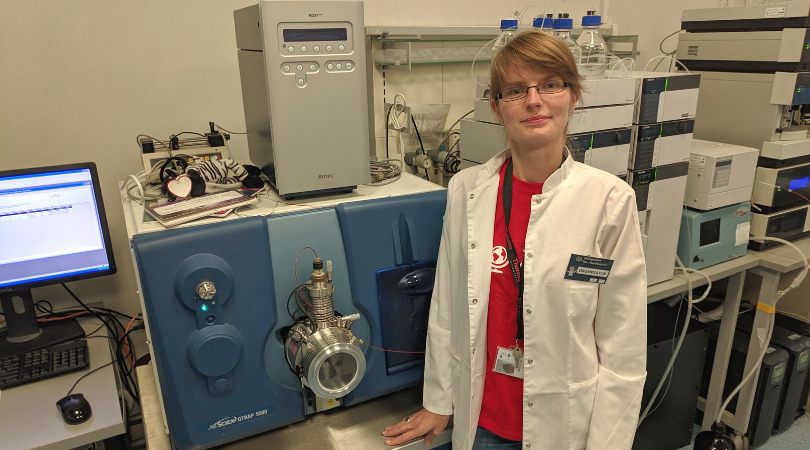In the 17th edition of the SONATA 17 competition announced by the National Science Center in Krakow, PhD Agnieszka Kij is the second scientist from the Jagiellonian Centre for Experimental Therapeutics (JCET) which to receive funding for research . The Doctor Kij will run a project entitled “In the search of specific oxylipin fingerprint reflecting the development of endothelial dysfunction with the use of non-targeted and targeted lipidomics”.
Oxylipins are biologically active lipid mediators encompassing oxygenation products of polyunsaturated fatty acids (PUFAs) including arachidonic acid (AA), eicosapentaenoic acid (EPA) and docosahexaenoic acid (DHA). Oxylipins such as AA-derived eicosanoids participate mainly in pro-inflammatory response (e.g., prostaglandins), with the exception of vasoprotective prostacyclin (PGI2). In recent years, an increasing attention has been paid to a novel class of AA-, EPA- and DHA-derived oxylipins referred as specialized pro-resolving mediators (SPMs; e.g., lipoxins LX, maresins MaR, resolvins RvE and RvD), that govern the resolution of inflammation and promote tissue regeneration. One can assume, that unresolved inflammation resulted from failed lipid mediator class switching from pro-inflammatory eicosanoids to SPMs can contribute to chronic vascular inflammation, and consequently to coronary and systemic endothelial dysfunction (ED). Despite the growing knowledge on lipid-dependent molecular mechanisms involved in endothelial dysfunction development, the pattern and time-frame of oxylipin alterations linked specifically to hyperlipidaemia- and age-induced coronary and systemic endothelial dysfunction, that could be helpful for early diagnosis, prevention and treatment of ED and cardiovascular diseases (e.g., atherosclerosis), have not been characterized.

Accordingly, taking advantage of newly developed UPLC-MS non-targeted and targeted lipidomic, this project aims to identify the specific oxylipin fingerprint and oxylipin quantification, that will reflect the coronary and systemic endothelial dysfunction developed in hyperlipidaemia along ageing as well as to verify whether the improvement of vascular function by well-known vasoprotective agents (metformin or atorvastatin, and PUFAs) is associated with changes in oxylipin profile and lipid mediator class switch in dyslipidaemic E3L.CETP mice.
Concluding, the project focusing on a simultaneous evaluation of a broad spectrum of oxylipins in relation to the multi-parameter assessment of endothelial function will allow to identify specific oxylipin fingerprint reflecting the coronary and systemic endothelial dysfunction induced by hyperlipidaemia and ageing in humanized dyslipidaemic E3L.CETP mice, that could provide a new valuable approach for early diagnosis, prevention and new therapy of ED-related cardiovascular diseases in humans. Furthermore, finding the link between endothelial dysfunction, oxylipin profile and its changes in response to selected vasoprotective and PUFA treatment will bring a new knowledge for a better understanding the oxylipin(SPM)-dependent mechanisms and resolution pharmacology relevant to the therapy of coronary and systemic endothelial dysfunction.
Results
